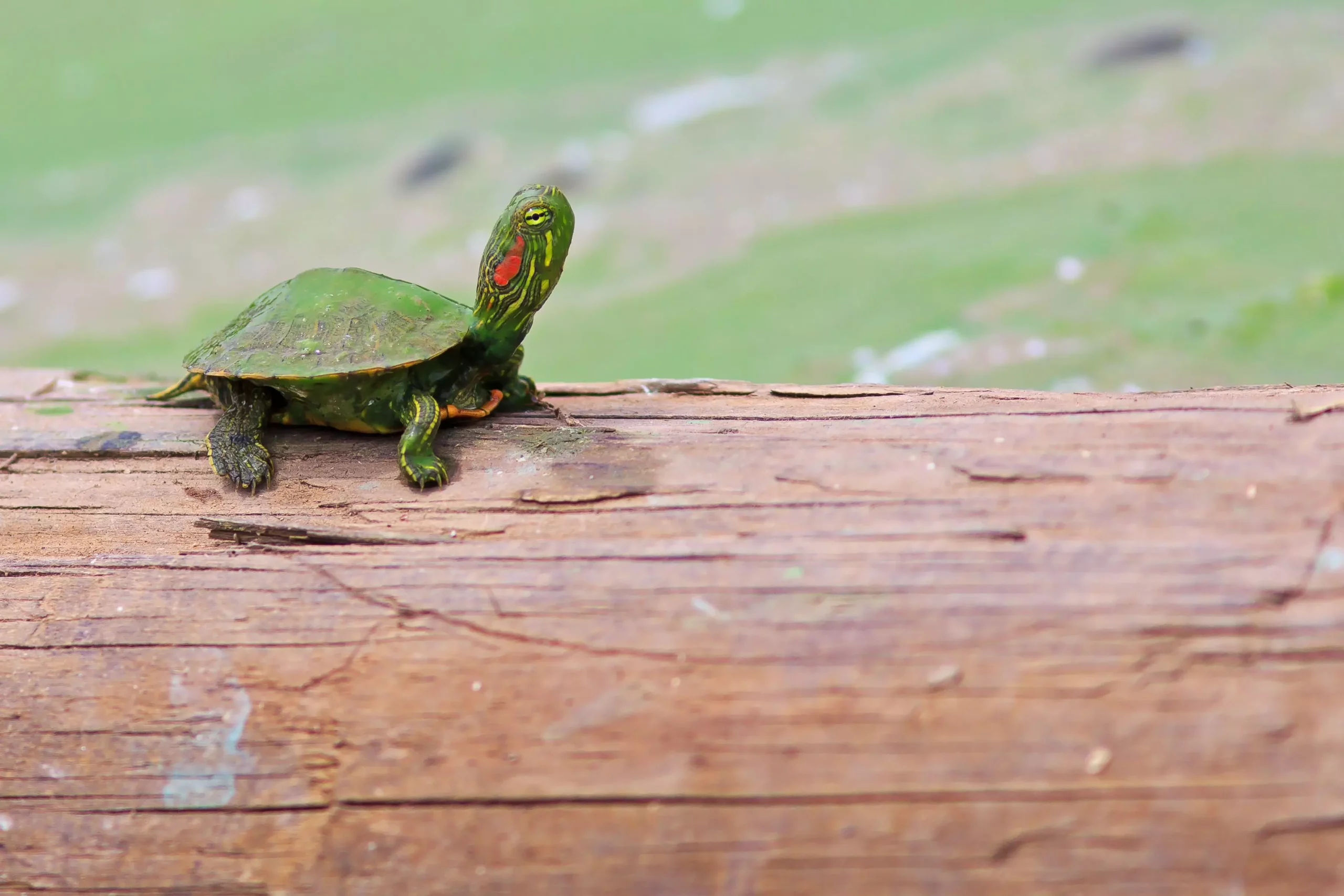Red-eared slider turtles (Trachemys scripta elegans) have captivated pet enthusiasts with their striking appearance and lively personalities. Known for their vibrant yellow and green shells adorned with bold red markings, these reptiles bring a splash of color and life to any home. However, prospective owners must fully understand the complexities of caring for these aquatic creatures. With a lifetime expectancy spanning two to three decades, red-eared sliders are not just casual pets; they require commitment, sophisticated care, and adequate space. This article delves into the essential elements of keeping a red-eared slider turtle, from habitat setup to dietary needs, while also addressing potential health concerns.
Native to the wetlands and ponds of North America, red-eared sliders are well-adapted to their aquatic lifestyle. These turtles are enthusiastic swimmers and need ample space to thrive. Captive-bred turtles tend to be more social and interactive than their wild counterparts, which often retreat into their shells when feeling threatened. Consequently, it is advisable to adopt turtles that have been bred in captivity rather than those captured from the wild. This not only ensures a more sociable pet but also promotes ethical pet ownership by reducing the demand for wild-caught animals.
Creating the Ideal Living Environment
Setting up an appropriate habitat for a red-eared slider is an essential aspect of their care. Contrary to popular misconception, these turtles cannot be kept in small plastic containers. A proper aquarium is necessary right from the start, with a minimum of 10 gallons for hatchlings, although larger tanks (like a 20-gallon variety) are encouraged. As they mature, red-eared sliders can grow up to 12 inches long, so be prepared to upgrade the tank size accordingly.
To replicate their natural habitat, the enclosure should include both a water area for swimming and a basking space. The basking site should include a ramp for easy access, with ambient temperatures between 85 and 95 degrees Fahrenheit. Proper filtration systems are also crucial, as red-eared sliders are known for their messy eating habits. A tank filter rated for at least two to three times the aquarium’s water volume will help maintain water quality and reduce cleaning frequency. Without a high-quality filtration system, owners can expect to engage in weekly water changes, which can be labor-intensive and cumbersome.
Like other reptiles, red-eared sliders are poikilothermic, meaning they rely on external heat sources to regulate their body temperature. Enthusiastic owners must invest in appropriate lighting, including full-spectrum UV lights, which are essential for the turtle’s overall health. These lights help mimic natural sunlight and should be kept on for 10 to 12 hours a day to ensure adequate vitamin D3 synthesis, promoting healthy shell growth and metabolism.
To monitor the habitat’s temperature accurately, it’s wise to use thermometers in both the water and basking areas. Ensuring that the water remains within the range of 75 to 80 degrees Fahrenheit is vital, as low temperatures can lead to various health issues, including respiratory infections.
Nutritional Needs and Feeding Practices
Feeding red-eared sliders poses its own set of challenges. These turtles are omnivorous, requiring a balanced diet that includes aquatic vegetation, leafy greens, and protein sources such as dried shrimp or mealworms. Many pet owners choose commercial turtle food formulated for complete nutrition, but it’s essential to consult a veterinarian to establish a dietary routine suitable for individual turtles’ needs. Additionally, feeding outside the main tank helps maintain cleanliness and reduces the frequency of water changes.
It’s crucial for owners to be cautious about the potential health risks associated with turtles, including the transmission of salmonella bacteria. Thus, proper hygiene practices, such as thorough hand washing after handling the turtle or its habitat, are necessary.
Red-eared sliders may face numerous health issues stemming from improper husbandry. Common problems include shell rot, respiratory infections, and parasites. Symptoms can manifest in various ways, including changes in appetite, abnormal feces, or excessive mucus production. Regular veterinary check-ups can proactively identify issues and keep your pet in optimal health.
Behaviorally, red-eared sliders are gentle and can become accustomed to their owners over time. However, it’s crucial to handle them with care to avoid stress. Slow, gentle interactions foster trust and often result in a more friendly pet.
When selecting a red-eared slider, it’s advisable to adopt from reputable breeders or rescue organizations rather than pet stores. Look for active, healthy turtles free from signs of distress. Always evaluate the conditions in which the turtle is kept—clean water and appropriate temperatures are indicators of a responsible seller.
While red-eared sliders can be wonderful and engaging pets, their care is a considerable undertaking requiring consistent attention and resources. By understanding their habitat needs, dietary requirements, and health-related considerations, future owners can ensure that these captivating turtles thrive and enhance their lives for many years to come.

